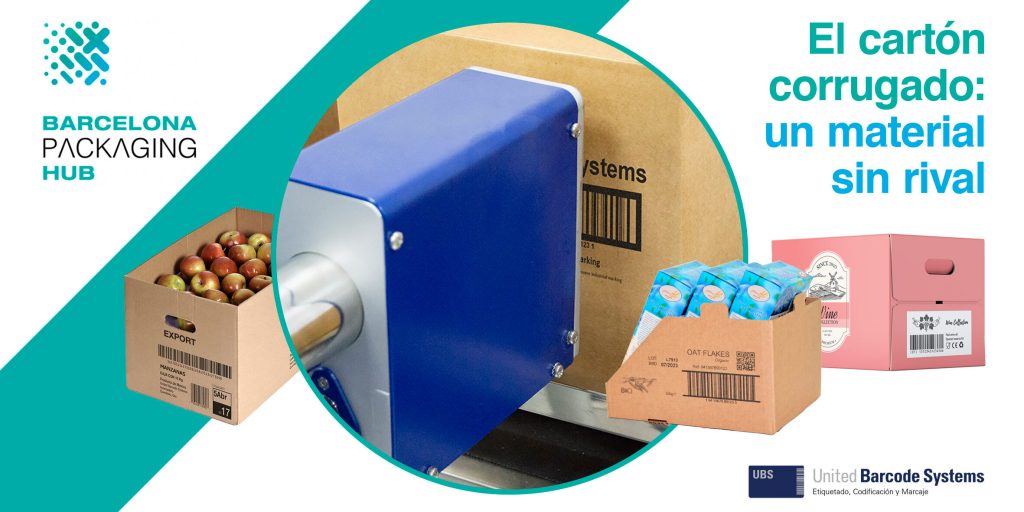The packaging industry has undergone a transformation in recent years as a result of the rise of e-commerce, the digitization of the supply chain to meet increased demands for speed and efficiency in the provision of goods, and growing environmental awareness, which is reflected in stricter regulations.
Despite continuous change, cardboard has always been there, both in industry and in everyday life. From moving boxes to the most colorful cereal packaging. Cardboard is part of our lives and seems to be unrivaled: lightweight, strong, natural, renewable, biodegradable, compostable and recyclable.
Sustainability and efficiency all at once
Concern for the environment is not a trend, it is a reality that directly affects the industry. For this reason, the consumption data for this material has remained stable, even growing, during the crisis derived from the pandemic, which tested the strength of the paper sector. Hygiene and prevention needs during this period have led to an increased demand for disposable boxes and trays for sanitary material, food and basic necessities in social facilities.
It was essential to maintain the activity of the plants to supply the market with basic necessities, since a large part of those 5,552 million m2 of corrugated cardboard were destined for the food and beverage sector and other goods labeled as basic necessities, according to figures from AFCO (Spanish Association of Corrugated Cardboard Containers and Packaging Manufacturers).
Corrugated cardboard, an unrivaled material
For many years, this market has experienced growth in the use of rigid plastics and flexible materials. In terms of packaging units, the main materials used worldwide are also flexible materials (36%), paper and cardboard (24%) and rigid plastic materials (20%).
While the most commonly used types of packaging are bags, pouches, bottles and cans, the exponential growth of e-commerce is likely to drive the use of corrugated cardboard even further. Big news for the industry. There are major challenges ahead for the packaging industry.
Regarding environmental sustainability, government regulations are becoming increasingly restrictive, just as consumers are rewarding practices that are more respectful with the planet. Thus, eco-friendly packaging is no longer anecdotal and has become a growing trend in the industry, and this obviously includes coding and labeling systems.
Traceability
The Spanish Association of Commercial Coding (AECOC) advises to face the technological challenges that traceability entails without losing sight of the main objective, which is none other than products reaching consumers with full guarantees thanks to traceability. A need that has become evident in recent years with globalization.
The quality of printing is of great importance for the correct functioning of the supply chain, since the choice of equipment not prepared to print on the surface to be identified, a distortion of the barcode or a detachment of the paint, could cause a failure in the reading of the products. Fortunately, we have before our eyes the best surface for coding, design, personalization… the list is immense. Cardboard represents an optimal field of action for improving traceability, reducing costs, human error and even operational times.
One of our associated companies, United Barcode Systems, has an optimal solution for the identification of carrugated cardboard boxes such as the APLINK range: a compact and versatile printer, adaptable to any production line, that prints in high resolution all types of texts, images, logos, symbols and barcodes 100% readable and compatible with GS1 standards (GTIN13, GTIN14, GS1-128, GS1 Datamatrix, etc.).
How long will cardboard packaging be used?
The challenges for the future in terms of competitiveness, logistics and marketing are great. Among other things, they will have to improve the quality of their products and be more versatile in order to take over the positions previously held by the various types of plastics, which, although not expected to disappear, will be much more marginalized in their use.
Corrugated cardboard has a long life ahead of it in the packaging industry. The rise of online commerce, its perception as a hygienic and environmentally friendly material, its versatility for the development of very diverse solutions, and regulations that penalize the use of non-reusable plastics are factors that favor the growth of this material.
“These figures are proof that corrugated packaging is proving to be the favorite choice of Spanish consumers. Today, with their purchasing decisions, physical or online, citizens ask brands for consistency with values such as sustainability, personalization, safety, efficiency or commitment. In this sense, brands that choose cardboard to package their products find in our material an ally in their strategies to meet this demand,” says Leopoldo Santorromán, president of AFCO.
Do you have any questions about labeling, coding or marking? We invite you to contact Barcelona Packaging Hub to cover that need.
Fore more information
bph@barcelona-packaging-hub.com
https://barcelona-packaging-hub.com/en/contacto/


